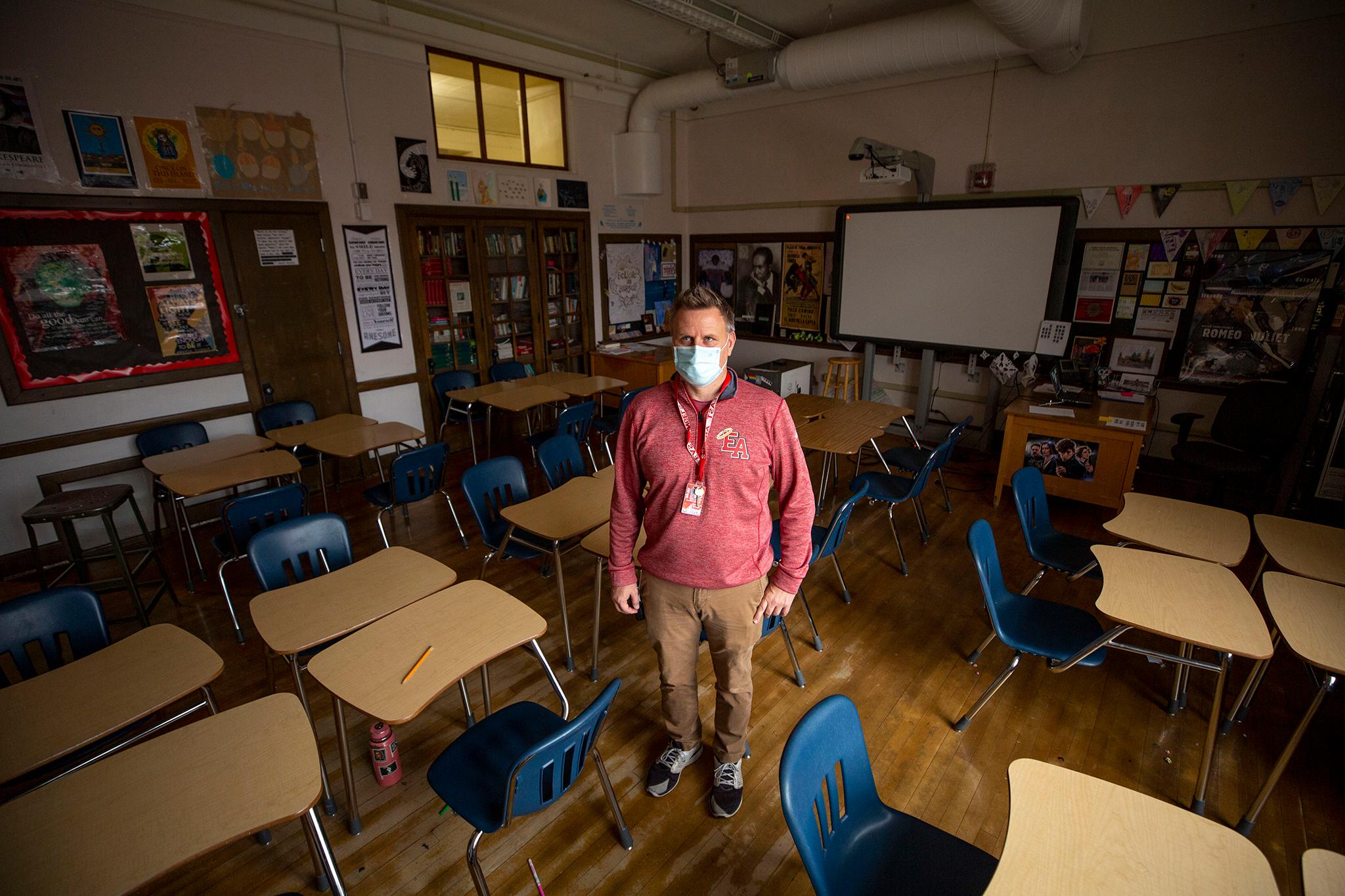
Mask mandates are expiring and COVID-19 cases and hospitalizations are on a downward trend.
State health department officials say they’re seeing things get better, but frontline providers say hospitals are still pretty busy.
We asked CPR Health Reporter John Daley to talk about what falling omicron COVID cases mean for day-to-day life in Colorado.
Falling omicron cases sounds like good news. Is it?
Absolutely it’s good news. Wind the clock back a couple of weeks ago. COVID-19 hospitalizations were within 200 of the all-time pandemic peak. Cases and transmission were at record highs. But that was the crest of the wave driven by the omicron variant. Since then all the metrics have trended downward.
What are state health officials saying we should expect in the coming weeks?
Dr. Rachel Herlihy, the state’s epidemiologist, says projections from state modelers show that perhaps 80 percent of Coloradans will be immune at least to this one variant, omicron, by the middle of February, due to vaccination or infection.
So there’s cautious optimism that COVID-19 transmission could be lower in the coming weeks?
Yes, with COVID-19 trends improving, plus the state’s modeling, that’s leading some big Colorado counties, like Denver and other metro counties to lift mask mandates.
Is there a “but” in there?
With the coronavirus, there’s always a “but.” This virus breaks all rules and defies all predictions. Long COVID-19 is a risk. Hospitalizations remain high. Half of hospitals expect a staff shortage in the next week. Nine out of 10 ICU beds are in use. Frontline providers have been sounding the alarm.
It takes time for things to broadly get better, right, especially after such a big wave of cases?
For sure. Even if the epidemiological curve is trending downward, transmission is still really high. There are still a lot of people who will catch COVID-19 even as the numbers improve.
One thing that really seems to stand out is just how fast and hard omicron has hit.
Absolutely. Colorado has seen 1.25 million cases so far. Half a million of them came in the last three months. First, from the super-transmissible delta variant, then the even more transmissible omicron variant. In January, omicron infected about 250,000 people in about three weeks.
And it hit everywhere. Practically every family, school, business could relate, right?
Totally. Just last week I was talking to a couple who owns a group of Denver restaurants, Frank and Jacqueline Bonanno. Their employees, their customers are highly vaccinated and boosted, but still many people caught it over the holidays, and they were scrambling. A lot of the cases were mild, as researchers say is usually the case for vaccinated and boosted individuals. But the size and timing of this wave was not ideal.
What would be considered a good test positivity rate after the sudden surge of cases we saw from omicron? It stood at about 30 percent in mid-January.
Public health experts often look to the positivity rate, the rate of positive COVID-19 tests, as a reliable gauge for community transmission, with 5 percent cited as a key threshold.
“The higher the percent positive is, the more concerning it is. As a rule of thumb, however, one threshold for the percent positive being ‘too high’ is 5 percent,” according to the Johns Hopkins Bloomberg School of Public Health. The World Health Organization, for example, recommended at the start of the pandemic that the percent positive remain below 5 percent for at least two weeks before governments consider reopening.
With mask restrictions lifting, should someone who hasn’t gotten COVID be worried? Are you going to keep wearing your mask?
Everyone has to judge their own risks. I’m super cautious. My mom is in her mid-80s. She’s fully vaccinated and boosted. So am I. But I don’t want her, or anyone, to catch it. It’s still spreading out there. Folks who study this say it’s a good idea to be careful, especially in crowded indoor spaces, and properly wear a good N95 mask.
And to keep an eye on case numbers, hospitalizations and other key numbers?
Absolutely. When transmission in your community is high, so is your risk. On Wednesday, the statewide positivity rate was dropping, but still almost 17 percent. When it drops to lower levels, say below the 5 percent level the experts watch, things are clearly safer.
Editor’s Note: A version of this article aired on the radio and has been adapted and edited for clarity.








